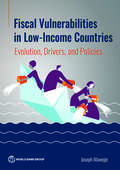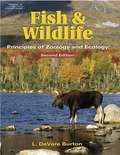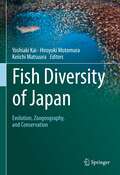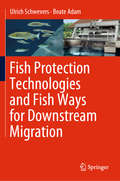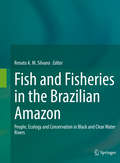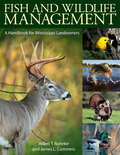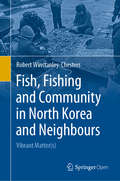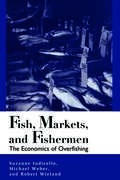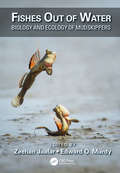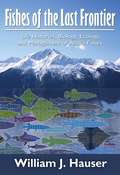- Table View
- List View
Fiscal Dimensions of Sustainable Development
by Sanjeev Gupta Kevin Fletcher Michael Keen Benedict Clements Luiz De Mello Muthukumara ManiA report from the International Monetary Fund.
Fiscal Vulnerabilities in Low-Income Countries: Evolution, Drivers, and Policies
by Joseph MawejjeThe world’s 26 poorest economies—home to about 40 percent of all people who live on less than $2.15 a day—are deeper in debt than at any time since 2006 and increasingly vulnerable to natural disasters and other shocks. Yet international aid as a share of their GDP has dwindled to a two-decade low, starving many of much-needed affordable financing. This study constitutes the first systematic assessment of the causes of chronic fiscal weakness in the very poorest economies—those with annual per capita incomes of less than $1,145 a year. These economies are poorer today on average than they were on the eve of COVID-19, even though the rest of the world has largely recovered. Government debt, on average, now stands at 72 percent of GDP, an 18-year high. Nearly half of these low-income countries (LICs)—twice the number in 2015—are either in debt distress or at high risk of it. Not one of them is at low risk. LICs’ ability to attract low-cost financing, meanwhile, has largely dried up: net financial flows—including foreign direct investment and official aid—fell to a 14-year low in 2022, the latest year for which data are available. That has left the World Bank’s International Development Association (IDA) as their single-largest source of low-cost financing from abroad. IDA provides grants and near-zero-interest-rate loans to 77 of the world’s most vulnerable economies, and it is crucial to the 26 poorest among them. These countries have significant potential to boost growth at home and contribute to broader prosperity and peace as well: their natural resources are ample, and their working-age populations are rapidly growing. If this potential can be harnessed effectively, they can contribute to sustainable growth and healthier fiscal positions. Well-designed national policy interventions can improve fiscal positions in LICs. National policy makers in LICs should aim to strengthen domestic revenue mobilization, improve spending efficiency, upgrade debt management practices, and foster stronger economic growth. Long-term prospects can be enhanced by policies that encourage broad reforms to ease structural constraints on investment growth, reduce informality, address market failures, and strengthen institutions. The support of the global community is also critical to helping LICs take advantage of their natural resources and demographic dividends, stabilizing their fiscal positions, and improving fiscal policy management.
Fish & Wildlife: Principles of Zoology and Ecology (Second edition)
by L. Devere BurtonThe book integrates the principles of zoology and ecology with the lives of different kinds of wild animals that inhabit North America and enlightens readers to the principles of biology in the context of how science relates to the survival of fish and wildlife. It gives descriptions of the lives, structures, growth, and classification of species in their natural habitats, and raises critical thinking questions to initiate the steps taken in the process of scientific discovery.
Fish Diversity of Japan: Evolution, Zoogeography, and Conservation
by Yoshiaki Kai Hiroyuki Motomura Keiichi MatsuuraThis book reviews and summarizes the studies on the fish diversity of Japan. It covers the present knowledge of ichthyofauna, habitat distribution, phylogeography, ecology, morphology, and conservation, as well as the history of ichthyology and fish collections in Japan. The book comprises five parts: I. Fish Diversity and Ichthyology of Japan, II. Habitat Distribution and Species Diversity, III. Diversity within Species: Phylogeographic Perspective on Japanese Fishes, IV. Morphological and Ecological Diversifications, and V. Conservation of Fish Diversity in Japan. The Japanese Archipelago is surrounded by two major warm and one cold currents. It is located in the western North Pacific and encompasses several climatic regimes from north to south. Although the land area of Japan is small, the Exclusive Economic Zone (EEZ) of Japan ranks as the sixth largest in the world, including several marginal seas (Sea of Okhotsk, Sea of Japan, and East China Sea), and deep trenches (Izu-Ogasawara, Japan, and Kurile Trenches). Owing to a variety of marine habitats and a complex geological history, Japan has a rich fish species diversity, representing over 4,500 species in 370 families. The richness of fish species diversity has attracted many scientists since the late 1700s, and continuous studies have led to the development of ichthyology in Japan. With chapters written by leading experts in the field, the book will provide a stimulating and reliable resource for future research and contribute to the progress of ichthyology of the world.
Fish Protection Technologies and Fish Ways for Downstream Migration
by Beate Adam Ulrich SchweversThis book offers a comprehensive review of current systems for fish protection and downstream migration. It offers the first systematic description of the currently available technologies for fish protection at hydropower intakes, including accurate and timely data collected by the authors and other researchers. It describes how to design and test them in agreement with the guidelines established from the EU Water Framework Directive. The book includes important information about fish biology, with a special focus on swimming and migration mechanisms. It offers a robust bridge between concepts in applied ecology and civil hydraulic engineering, thus providing biologists and hydraulic engineers with an authoritative reference guide to both the theory and practice of fish protection. It is also of interest for planners, public authorities as well as environmental consultants
Fish and Fisheries in the Brazilian Amazon: People, Ecology and Conservation in Black and Clear Water Rivers
by Renato A. M. SilvanoThis book provides comparative data on fish ecology and small-scale fisheries between Tapajos (clear water) and Negro (black water) rivers, in the Brazilian Amazon. These rivers are less studied than white water rivers and few books on Amazon fishes have addressed more than one river basin. These data can serve as a baseline to check future changes or impacts in these rivers, which can be affected by development projects, such as highways, deforestation, mining and dams. Besides information on fish biology, the book also discusses fish uses, fisheries and its importance for riverine people, comparing these data for each fish species between sites located inside and outside conservation units. The book is an outcome of the research project ‘Linking sustainability of small-scale fisheries, fishers’ knowledge, conservation and co-management of biodiversity in large rivers of the Brazilian Amazon’, which was coordinated by the editor of this volume and funded by United States Agency for International Development (USAID) and National Academies of Science, Engineering and Medicine (NAS).
Fish and Wildlife Management: A Handbook for Mississippi Landowners
by Adam T. Rohnke and James L. CumminsFeaturing over five hundred illustrations and forty tables, this book is a collection of in-depth discussions by a tremendous range of experts on topics related to wildlife and fisheries management in Mississippi. Beginning with foundational chapters on natural resource history and conservation planning, the authors discuss the delicate balance between profit and land stewardship. A series of chapters about the various habitat types and the associated fish and wildlife populations that dominate them follow. Several chapters expand on the natural history and specific management techniques of popular species of wildlife, including white-tailed deer, eastern wild turkey, and other species. Experts discuss such special management topics as supplemental, wildlife-food planting, farm pond management, backyard habitat, nuisance animal control, and invasive plant species control. Leading professionals who work every day in Mississippi with landowners on wildlife and fisheries management created this indispensable book. The up-to-date and applicable management techniques discussed here can be employed by private landowners throughout the state. For those who do not own rural lands but have an interest in wildlife and natural resources, this book also has much to offer. Residents of urban communities interested in creating a wildlife-friendly yard will delight in the backyard habitat chapter specifically written for them. Whether responsible for one-fourth of an acre or two thousand, landowners will find this handbook to be an incalculable aid on their journey to good stewardship of their Mississippi lands.
Fish, Fishing and Community in North Korea and Neighbours: Vibrant Matter(s)
by Robert Winstanley-ChestersThis open access book explores the histories and geographies of fishing in North Korea and the surrounding nations. With the ideological and environmental history of North Korea in mind, the book examines the complex interactions between local communities, fish themselves, wider ecosystems and the politics of Pyongyang through the lens of critical geography, fisheries statistics and management science as well as North Korean and more generally Korean and East Asian studies. There is increasing global interest in North Korea, its politics, people and landscapes, and as such, this book describes encounters with North Korean fishing communities, as well as unusual moments in the field in the People’s Republic of China, the Russian Federation and the Republic of Korea (South Korea). It addresses fish, fishing infrastructure, fishing science and fishing statistics and other non-human elements of North Korean and other nations’ developmental regimes as actors and participants within them as much as humans and their technologies. The book enables readers to gain extensive insights into the aspirations and practices of fishing in North Korea and its neighbours, the navigation of difficult political and developmental situations and changing ecological realities in a time of environmental and climate crisis familiar to many across the globe.
Fish, Markets, and Fishermen: The Economics Of Overfishing
by Michael L. Weber Suzanne Iudicello Robert WielandA significant number of the world's ocean fisheries are depleted, and some have collapsed, from overfishing. Although many of the same fishermen who are causing these declines stand to suffer the most from them, they continue to overfish. Why is this happening? What can be done to solve the problem.The authors of Fish, Markets, and Fishermen argue that the reasons are primarily economic, and that overfishing is an inevitable consequence of the current sets of incentives facing ocean fishermen. This volume illuminates these incentives as they operate both in the aggregate and at the level of day-to-day decision-making by vessel skippers. The authors provide a primer on fish population biology and the economics of fisheries under various access regimes, and use that information in analyzing policies for managing fisheries. The book: provides a concise statistical overview of the world's fisheries documents the decline of fisheries worldwide gives the reader a clear understanding of the economics and population biology of fish examines the management issues associated with regulating fisheries offers case studies of fisheries under different management regimes examines and compares the consequences of various regimes and considers the implications for policy makingThe decline of the world's ocean fisheries is of enormous worldwide significance, from both economic and environmental perspectives. This book clearly explains for the nonspecialist the complicated problem of overfishing. It represents a basic resource for fishery managers and others-fishers, policymakers, conservationists, the fish consuming public, students, and researchers-concerned with the dynamics of fisheries and their sustenance.
Fishes Out of Water: Biology and Ecology of Mudskippers (CRC Marine Science)
by Zeehan Jaafar Edward O. MurdyMudskippers are amphibious fishes native to the Indo-West Pacific and tropical western Africa. Unlike most fishes, mudskippers emerse to forage, find mates, and defend territories. Adaptations to their morphology, physiology and behavior enable mudskippers to accommodate both aquatic and terrestrial habitats. For these traits, mudskippers have long captured the fascination of scientists, naturalists, and fish hobbyists. Some mudskipper taxa (e.g. Periophthalmodon spp., Periophthalmus spp., Boleophthalmus spp.) are readily observed on mudflats and mangrove forests during the ebb tide. Correspondingly, these conspicuous and widespread taxa are relatively well-studied. The autecology and basic biology for the remaing taxa (e.g. Apocryptodon spp. and Oxuderces spp.) are still poorly understood. Fishes Out of Water: Biology and Ecology of Mudskippers is the first comprehensive book to synthesize published scientific information and observation on these fishes. Two dozen subject experts present thorough overviews in fifteen distinct chapters. Contents span mudskipper anatomy, distribution, systematics, physiology, ecology, and conservation. Unique adaptations to terrestriality are discussed within the context of each chapter foci. This authoritative reference equips the reader with the basic foundation to understand mudskipper biology and ecology, while providing a framework in which emerging data are discussed. The book will be of interest to a broad range of students, researchers, and professionals in ichthyology, evolution, ecology, animal behavior, and comparative physiology.
Fishes of the Last Frontier: Life Histories, Biology, Ecology, and Management of Alaska's Fishes
by Bill HauserFishes of the Last Frontier answers many of your fish questions and others you haven't even thought of yet in a nontechnical, plain talk voice. Learn about the fishes that are of value or special interest to Alaskans: how fish are able to survive and grow, how they get along with each other--or not--and what they eat, where and how our Alaska fishes spawn, the difference between a red and a redd, and the difference between anadromous and catadromous and why that is important. The author, a fishery scientist with nearly 50 years of experience and training, including more than 30 years in Alaska, describes the life history characteristics of 43 species of fishes valuable or important in some way to Alaskans. He delves into various aspects of biology and ecology of fish and provides insight into how humans and fish interact. The processes of fishery management in Alaska are described. Fishes of the Last Frontier includes fishes from throughout Alaska in fresh, brackish, and marine waters and sport, commercial, and subsistence fisheries. Learn not just how anadromous fish find their way home but also how scientists were able to learn the details. Nontechnical readers have reported the presentations as enjoyable, understandable, and informative.
Fishing Europe's Troubled Waters: Fifty Years of Fisheries Policy (Earthscan Oceans)
by David SymesSpanning the last 50 years of fisheries policy in Europe, this book is the parting contribution and career-spanning reflection from one of Europe’s most renowned social scientists working in the field of fisheries management and policy. The last 50 years have without doubt been the most turbulent years in the history of North Atlantic fisheries – a turbulence brought about by the actions of fishers, scientists and above all politicians. It is a period of change that sees a radical redrawing of the political geography of fisheries, globalisation of trade, the development of fisheries management towards increasingly restrictive regulation, and declining fish stocks. The book explains why the bold but deeply flawed Common Fisheries Policy persistently failed to deliver its basic goal of sustainable fisheries. The spotlight falls on the monolithic, highly centralised, command and control nature of the Policy that strives to apply a universal ‘one size fits all’ approach, thus creating a governing system wholly unsuited to the system to be governed, out of kilter with preferred models of governance, and disconnected from the practical realities of fishing as a livelihood in a challenging environment. A final section on Brexit focuses on its halting progress from concept to reality, the implications for the fisheries sector and the fateful final negotiations with the EU over the fisheries question. Seeking to explain why the anticipated benefits for the UK industry failed to materialise, attention is drawn to the misplaced political hubris over regaining ‘sovereignty’ in areas like the North Sea. This book will be essential reading for students, scholars, professionals and policymakers working on fisheries, marine governance, natural resource management, environmental policy and the European Project.
Fishing Grounds: Defining A New Era For American Fisheries Management
by Economics, and the Environment The H. John Heinz III Center for ScienceFisheries management today is highly contentious. The interests of fishers and fish processors, coastal communities, the government, and environmental organizations are often different and can even be mutually incompatible.Fishing Grounds offers a comprehensive assessment of the legal, social, economic and biological context of marine fisheries management in the United States. Drawing on interviews with stakeholders from all sides of the issue, the authors seek common ground -- and points of unresolved controversy -- among the diversity of interests and viewpoints involved. Chapters examine: history and background status of marine fisheries fishery productivity from biological, social, and economic perspectives ownership of fishery resources management structures and incentives the roles of science and evaluation Each chapter begins with legal, technical, and conceptual background to help readers understand the sets of issues involved and follows that with a balanced presentation of stakeholder views.Fishing Grounds presents a useful overview of fisheries management options and positions regarding those options, providing valuable insight into the opinions and concerns of stakeholders and the sets of incentives to which those stakeholders respond. It is an important work for fisheries management professionals in industry, government agencies, and nongovernmental organizations, as well as for students and researchers involved with fisheries and fisheries management.
Fishing in Contested Waters
by Sarah KingAfter the Supreme Court of Canada's 1999 Marshall decision recognized Mi'kmaw fishers' treaty right to fish, the fishers entered the inshore lobster fishery across Atlantic Canada. At Burnt Church/Esgenoôpetitj, New Brunswick, the Mi'kmaw fishery provoked violent confrontations with neighbours and the Canadian government. Over the next two years, boats, cottages, and a sacred grove were burned, people were shot at and beaten, boats rammed and sunk, roads barricaded, and the local wharf occupied.Based on 12 months of ethnographic field work in Burnt Church/Esgenoôpetitj, Fishing in Contested Waters explores the origins of this dispute and the beliefs and experiences that motivated the locals involved in it. Weaving the perspectives of Native and non-Native people together, Sarah J. King examines the community as a contested place, simultaneously Mi'kmaw and Canadian. Drawing on philosophy and indigenous, environmental, and religious studies, Fishing in Contested Waters demonstrates the deep roots of contemporary conflicts over rights, sovereignty, conservation, and identity.
Fishing on the Russian River (Images of America)
by Meghan Walla-MurphyThe Russian River tells a rich story of Sonoma County, both historically and ecologically. For as long as can be remembered, there has been an intimate relationship between the people of the Russian River and the fish, specifically the salmon and the steelhead. This tale of fishing begins with the Pomo people's communal fishing forays, winds through Russian exploration and early American settlement, and lands in the present time. For millennia, fishing has been a cultural cornerstone on the Russian River. Unfortunately, this once lively and productive salmonid fishery is dying. Overfishing, gravel mining, increased sedimentation from logging and agriculture, dams, and overdevelopment along the riverbanks and tributaries have all caused a decline in salmonid numbers. Thankfully, through collaborative efforts of local residents, nonprofit organizations, ranchers, farmers, and government agencies, fish populations are rebounding.
Fission-Track Thermochronology and its Application to Geology (Springer Textbooks in Earth Sciences, Geography and Environment)
by Marco G. Malusà Paul G. FitzgeraldThis book is focused on the basics of applying thermochronology to geological and tectonic problems, with the emphasis on fission-track thermochronology. It is conceived for relatively new practitioners to thermochronology, as well as scientists experienced in the various methods. The book is structured in two parts. Part I is devoted to the fundamentals of the fission-track method, to its integration with other geochronologic methods, and to the basic principles of statistics for fission-track dating and sedimentology applied to detrital thermochronology. Part I also includes the historical development of the technique and thoughts on future directions. Part II is devoted to the geological interpretation of the thermochronologic record. The thermal frame of reference and the different approaches for the interpretation of fission-track data within a geological framework of both basement and detrital studies are discussed in detail. Separate chapters demonstrate the application of fission-track thermochronology from various perspectives (e.g., tectonics, petrology, stratigraphy, hydrocarbon exploration, geomorphology), with other chapters on the application to basement rocks in orogens, passive continental margins and cratonic interiors, as well as various applications of detrital thermochronology.
Fission-track Thermochronology: Methodology and Applications to Geology (ISTE Consignment)
by Marc JolivetLow-temperature thermochronology has become an essential tool when studying near-surface geological processes. Time-temperature constraints are vital to quantify and describe a large variety of geological processes, such as relief building, erosion and sedimentation or the maturation of organic matter in sedimentary basins. After a brief history covering the discovery of fission tracks to their first applications in geochronology, Fission-track Thermochronology presents a complete description of not only the fission-track, but also the (U Th Sm)/He thermochronology approaches, both on basement rocks and on sediments. Firstly, the physical and chemical processes that underlie these techniques are addressed, and the analytical methods are described in detail. A particular focus is placed on the latest developments, such as the use of laser-ablation ICP-MS, and a whole chapter is dedicated to statistical modeling of the data. Finally, numerous examples of applications to geological questions will provide the reader with a comprehensive overview of the possibilities of low temperature thermochronology in solving geological and geomorphological questions.
Five Easy Pieces on Water: Essentials of Water Science explained by an Engineering Scholar
by Renzo RossoWater is the essential substance for life on Earth. The natural patrimony of all living beings and the material and cultural heritage, a common good, a shared resource, a treasure trove of humanity. The nature of water, water at rest and in motion, the water cycle and its management are addressed here in a multidimensional, comprehensive and transdisciplinary approach. The book focuses on water without complying with any disciplinary approach: philosophical, historical, physical and mathematical issues are merged with traditional hydrochemistry, hydrostatics, hydrodynamics and hydrology to provide an overview of basic knowledge on Earth’s water. These five lectures can be delivered to any undergraduate STEM student to introduce them a valuable, basic, multidisciplinary knowledge on water. Non-specialists will find here an insight of water made as simple as possible, but not simpler than required
Five Rules for Tomorrow's Cities: Design in an Age of Urban Migration, Demographic Change, and a Disappearing Middle Class
by Patrick M. CondonAs urban designers respond to the critical issue of climate change they must also address three cresting cultural waves: the worldwide rural-to-urban migration; the collapse of global fertility rates; and the disappearance of the middle class. In Five Rules for Tomorrow's Cities, planning and design expert Patrick Condon offers five rules to help urban designers assimilate these interconnected changes into their work: (1) See the City as a System; (2) Recognize Patterns in the Urban Environment; (3) Apply Lighter, Greener, Smarter Infrastructure; (4) Strengthen Social and Economic Urban Resilience; and (5) Adapt to Shifts in Jobs, Retail, and Wages. Five Rules for Tomorrow's Cities provides grounded and financially feasible design examples for tomorrow's sustainable cities, and the design tools needed to achieve them.
Five Superpowers for Co-Creators: How change makers and business can achieve the Sustainable Development Goals
by Katrin MuffThis groundbreaking and timely book provides change makers, organizations and facilitators with practical tools to initiate and conduct multi-stakeholder co-creation processes. Such processes are of critical importance in times of rapid change, where mega trends and grand challenges influence the market dynamics of business in entirely new ways. The book provides a concrete pathway for business to become future-ready by building capacity to work outside its traditional boundaries. The book unfolds the shift of multi-stakeholder teams from a state of competition to a state of collaboration, addressing the inner and outer dimensions of such a change. The five superpowers identified in the book are: (1) the genuine engagement of individuals, (2) collective solutions of groups, (3) transformative spaces created by facilitators, (4) the building blocks of co-creation, and (5) an effective strategy process for organizations. The book explores the challenges to achieve each of these superpowers. It also shares the stories of "heroes of transformation" and explores what have been the reasons for their success. The Sustainable Development Goals (SDGs), the grand challenges, the future of work…call it what you want, the future is here and organizations, change makers and facilitators need nothing less than these superpowers to collaborate with other players to solve these wicked problems.
Fixing Climate: What Past Climate Changes Reveal About the Current Threat—and How to Counter It
by Robert Kunzig Wallace S. BroeckerDealing with the Root Cause of Global Warming Calls for New Remedies, Says ExpertThe product of a unique collaboration between a pioneering earth scientist and an award winning science writer, FixingClimate takes an unconventional approach to the vitally important issue of global warming. Wallace S. Broecker, a longtime researcher at Columbia University's Lamont-Doherty Earth Observatory, warned about the possible consequences of global warming decades before the concept entered popular consciousness. Hooked on climate studies since his student days, he has learned, largely through his own findings, that climate changes—naturally, dramatically, and rarely benignly. He also knows from experience that when mankind pushes nature as we are currently doing by dumping some sixty to seventy million metric tons of carbon dioxide into the atmosphere every day, climate will change even more dramatically and less benignly. As Broecker points out, if a well-meaning fairy godmother were to turn us all into energysaving paragons at the stroke of midnight tonight, the resulting reduction in atmospheric carbon dioxide might lessen but could not turn aside the great warming tide now headed our way. There is, nonetheless, a glimmer of hope in the development of new technologies that are directed not only at the reduction of carbon dioxide output but also at its harmless disposal. Told by skilled science journalist Robert Kunzig, Fixing Climate is a timely and informative story that makes for riveting reading
Fixing the Climate: Strategies for an Uncertain World
by David G. Victor Charles F. SabelSolving the global climate crisis through local partnerships and experimentationGlobal climate diplomacy—from the Kyoto Protocol to the Paris Agreement—is not working. Despite decades of sustained negotiations by world leaders, the climate crisis continues to worsen. The solution is within our grasp—but we will not achieve it through top-down global treaties or grand bargains among nations.Charles Sabel and David Victor explain why the profound transformations needed for deep cuts in emissions must arise locally, with government and business working together to experiment with new technologies, quickly learn the best solutions, and spread that information globally. Sabel and Victor show how some of the most iconic successes in environmental policy were products of this experimentalist approach to problem solving, such as the Montreal Protocol on the ozone layer, the rise of electric vehicles, and Europe’s success in controlling water pollution. They argue that the Paris Agreement is at best an umbrella under which local experimentation can push the technological frontier and help societies around the world learn how to deploy the technologies and policies needed to tackle this daunting global problem.A visionary book that fundamentally reorients our thinking about the climate crisis, Fixing the Climate is a road map to institutional design that can finally lead to self-sustaining reductions in emissions that years of global diplomacy have failed to deliver.
Fixing the Sky
by Fleming James RodgerAs alarm over global warming spreads, a radical idea is gaining momentum. Forget cuts in greenhouse gas emissions, some scientists argue. Instead, bounce sunlight back into space by pumping reflective nanoparticles into the atmosphere. Launch mirrors into orbit around the Earth. Make clouds thicker and brighter to create a "planetary thermostat. "These ideas might sound like science fiction, but in fact they are part of a very old story. For more than a century, scientists, soldiers, and charlatans have tried to manipulate weather and climate, and like them, today's climate engineers wildly exaggerate what is possible. Scarcely considering the political, military, and ethical implications of managing the world's climate, these individuals hatch schemes with potential consequences that far outweigh anything their predecessors might have faced. Showing what can happen when fixing the sky becomes a dangerous experiment in pseudoscience, James Rodger Fleming traces the tragicomic history of the rainmakers, rain fakers, weather warriors, and climate engineers who have been both full of ideas and full of themselves. Weaving together stories from elite science, cutting-edge technology, and popular culture, Fleming examines issues of health and navigation in the 1830s, drought in the 1890s, aircraft safety in the 1930s, and world conflict since the 1940s. Killer hurricanes, ozone depletion, and global warming fuel the fantasies of today. Based on archival and primary research, Fleming's original story speaks to anyone who has a stake in sustaining the planet.
Flakes, Jugs, and Splitters: A Rock Climber's Guide to Geology (How To Climb Series)
by Sarah GarlickRock climbers have an inherent interest in geology. For some, it&’s about knowing what gear to use or how to avoid rotten bands of rock. For others, it&’s about finding the next hot-spot boulder field, or understanding why their local crag exists. For most of them, curiosity about rocks comes as naturally as their desire to climb them. Geology is the fundamental control on the sport, and yet there are no practical guides for the climber interested in rocks. Flakes, Jugs, and Splitters fills the niche. With an informal Q&A format and fun, informative language, it brings the often esoteric science of geology into the hands of rock climbers. Covering topics from how to use a geologic map to finding new crags, from why Europe has the best limestone to how El Capitan&’s North America Wall got its name, this book has a fact for every climber&’s ponderings. Top-quality photographs of worldwide destinations and easy-to-read artist&’s renderings of geologic concepts make it as visually engaging as it is entertaining and edifying.
Flame and Fortune in the American West: Urban Development, Environmental Change, and the Great Oakland Hills Fire
by Gregory L. SimonFlame and Fortune in the American West creatively and meticulously investigates the ongoing politics, folly, and avarice shaping the production of increasingly widespread yet dangerous suburban and exurban landscapes. The 1991 Oakland Hills Tunnel Fire is used as a starting point to better understand these complex social-environmental processes. The Tunnel Fire is the most destructive fire--in terms of structures lost--in California history. More than 3,000 residential structures burned and 25 lives were lost. Although this fire occurred in Oakland and Berkeley, others like it sear through landscapes in California and the American West that have experienced urban growth and development within areas historically prone to fire. Simon skillfully blends techniques from environmental history, political ecology, and science studies to closely examine the Tunnel Fire within a broader historical and spatial context of regional economic development and natural-resource management, such as the widespread planting of eucalyptus trees as an exotic lure for homeowners and the creation of hillside neighborhoods for tax revenue--decisions that produced communities with increased vulnerability to fire. Simon demonstrates how in Oakland a drive for affluence led to a state of vulnerability for rich and poor alike that has only been exacerbated by the rebuilding of neighborhoods after the fire. Despite these troubling trends, Flame and Fortune in the American West illustrates how many popular and scientific debates on fire limit the scope and efficacy of policy responses. These risky yet profitable developments (what the author refers to as the Incendiary), as well as proposed strategies for challenging them, are discussed in the context of urbanizing areas around the American West and hold global applicability within hazard-prone areas.

